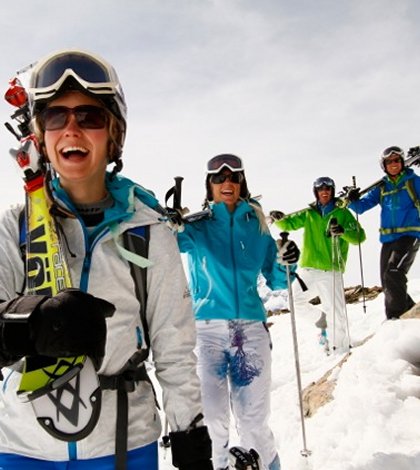Engaging in snow sports can be the most exhilarating activity anyone can enjoy, but it can also be fraught with risk. On the upside, staying safe while fully enjoying the activity is certainly possible, but only if you heed some vital reminders. The following are four of the most important tips concerning winter sporting activities.
Boundaries Must be Respected
With the high-velocity nature of most snow sports, it is very easy to become the unwilling participant in an accident, or cause one yourself. Those who ignore the rules not only pose a danger to themselves, but also to others. When skiing, for example, when you see boundary ropes, you must appreciate what they stand for; by disregarding these boundaries just for ‘the thrill of it’, you may very well end up in some extremely dangerous terrain. Usually, such boundary ropes or signs signify what ski patrollers have identified as unsafe slopes or hazardous windblown areas. Respecting the boundaries may curtail your thrills, but it will also keep you safe to enjoy your holiday for another day!
Wear a Good Helmet
Wearing helmets while doing any snow sports is not a fashion statement-this action saves lives. Without scare mongering or dampening spirits, it is important to know that brain injury – a leading cause of disability or death – can happen when undertaking any sports. While such injuries most often occur at high speeds, regardless of whether you’re skiing on a beginner or intermediate slope, make sure you always wear a helmet.
Learn to ‘Read’ the Environment
When skiing or show boarding – especially if you’re on a particular slope for the first time – you should learn to be observant of the conditions. Avalanche risk, for instance, is a danger during and right after snowfalls, and slopes that are 30 degrees or greater can also add to the risk of an avalanche. While resort operators and ski patrollers will keep skiers safe by posting signs and verbal warnings, it still always wise to be alert and vigilant when it comes to your own safety.
Learn to Fall ‘Proactively’
Don’t kid yourself; you will fall at some time or another is you take on any kind of winter sports. Learning to “fall proactively” may sound contrary to common sense, but the truth is, learning how to fall properly can help you avoid sustaining injuries while engaging in any form of snow sports. Look at it this way: falling is an opportunity to learn and master the sport that little bit more. In fact, many ski training professionals say that attempting to over-correct, to break the fall, or to try to remain standing on your skis can actually enhance the chances of certain injuries to the extremities. For instance, trying too hard to stay upright against the body’s weight, speed and gravity can damage the knees.


















